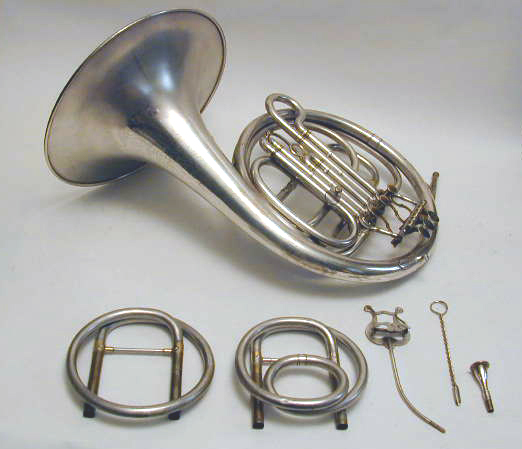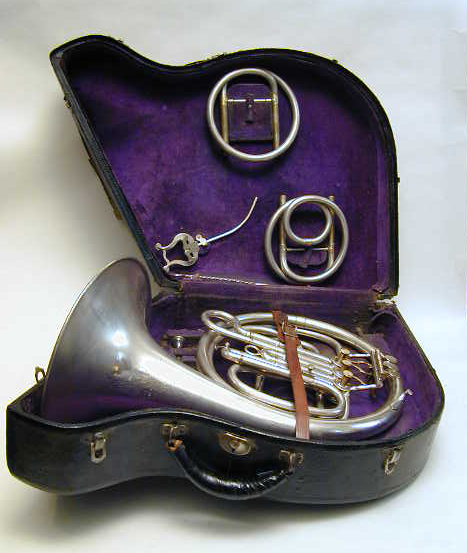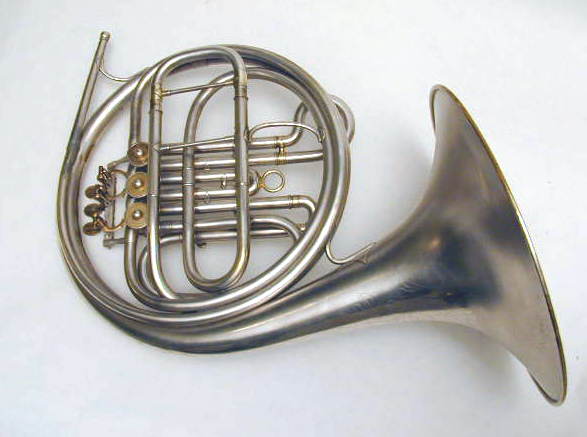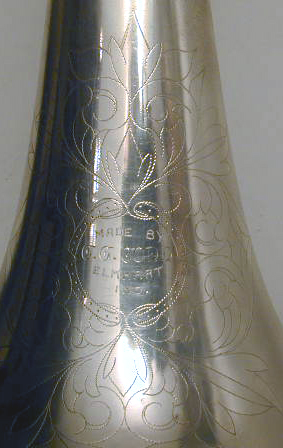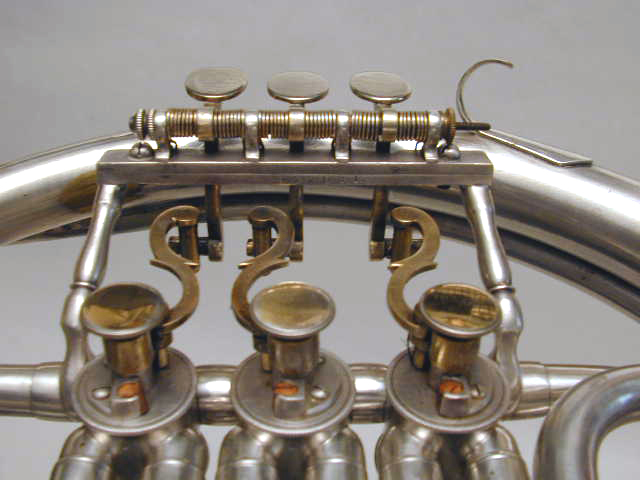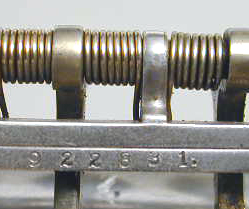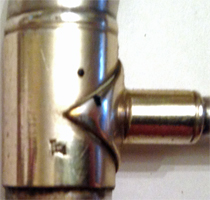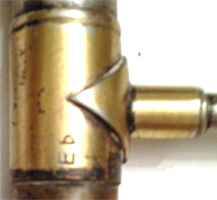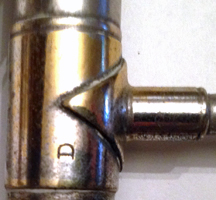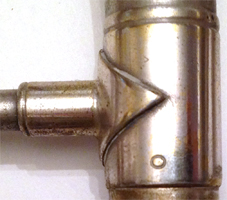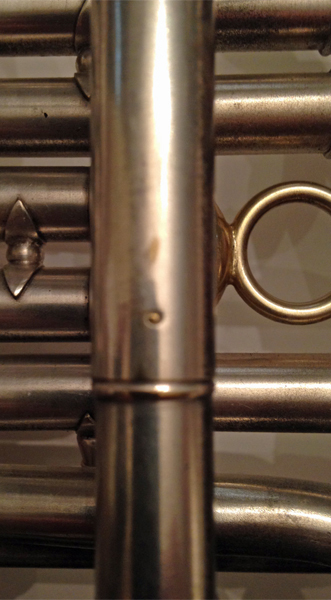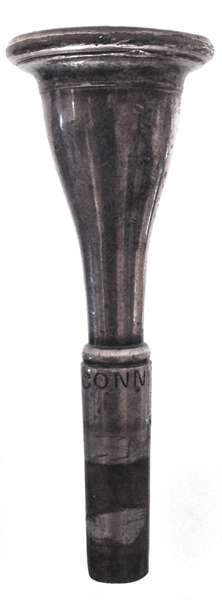1. Of the four
finishes available in the 1913, this one best fits the
subject horn. Missing on this horn, however, are the gold
plating and pearl inlays on the valve finger pieces, water
key, and extra tuning slide for international pitch
(possibly lost but no provision in the case). It's not
clear what the "piston wiper" is for. The other three
finishes are as follows: "Artists' Finish for Soloists",
quadruple gold plated, $140; Fin. II, same as Fin. I
(described above in the text) but without the gold trim,
$80; Fin. III, highly polished brass, silver plated
mountings, silver plated pearl inlaid finger pieces, $70. On
the same page is the "New Invention French Horn" with piston
valves described as "A French Horn Made From The Raw
Materials in C.G. Conn's Factory/ The Only American Factory
That Absolutely Builds a French Horn in Its Entirety." This
further suggests that the rotary valve set on the subject
horn is imported, since the above statement is not made of
the rotary model.
2. C.G. Conn was
known primarily for its piston valve band brass instruments.
The only French horns in the
1888
"Wonder Catalogue" price list have piston valves as
does the only French horn shown in the
1919
catalog. Between 1888 and 1913 the only mention of
French horns found in available publications (e.g. "C.G.
Conn's Truth") appear in the "Bargains" (shop-worn,
second-hand) classified listings with no illustrations. They
include some by Conn, "French imported",
Besson,
and
Boston
Musical Instrument Manufactory/Company. The
company's other brass instruments (all with piston valves)
are featured in fully illustrated pages. It appears that
Conn did not have its own tooling for rotary valves until
the 1920s when the full line of "D" series horns appeared in
the
company's
catalogs. Even then at least one example of a 4D model
single horn from 1924 is marked "Made in Germany." This horn
retains the basic characteristics of the Kölner design with
its long leadpipe and main tuning slide placed after the
valve set, although the valve tuning slides have been
updated from the traditional Kölner shapes. This is also
seen in the illustration in the
1926
catalog.
3. A clue that the
corpus or at least the tuning slides of the subject horn
might in fact have been made in the U.S. is seen
on the E-flat slide. It is marked "E♭." If it were
made in Germany it would probably be marked "Es."
